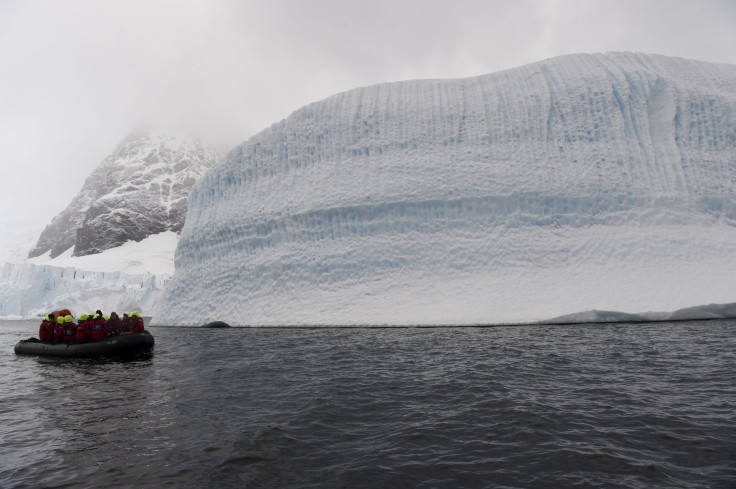Iceberg Twice The Size Of New York City To Break Off Antarctica, Says NASA

An iceberg twice the size of New York City is about to break off Antarctica’s Brunt Ice Shelf and into the Atlantic Ocean, according to scientists at NASA.
The organization shared two images of the ice shelf, comparing a satellite view from Jan. 23 to an image taken on Jan. 30, 1986. In the latest image, a long crack can clearly be seen winding its way to the south from the north and spanning most of the shelf. The image also shows cracks snaking in two directions across the Brunt Ice Shelf. NASA's scientists are also watching “to see if the loss will trigger the shelf to further change and possibly become unstable or break up.”
Cracking across Antarctica’s Brunt Ice Shelf is set to release an iceberg w/ an area about 2x the size of NYC. The splitting could result in an uncertain future for the shelf’s scientific research & human presence. See what @NASAEarth satellites captured: https://t.co/Atppp05I5j pic.twitter.com/WrI1p3bqVC
— NASA (@NASA) February 24, 2019
According to Joe MacGegor, a glaciologist at NASA’s Space Flight Center, depending on where the cracks merge, the stability of the entire shelf could be put at risk. Additionally, the rise in global temperatures has sped up the loss of ice in Antarctica. This has led to several icebergs breaking off from the continent in recent years, the biggest of which separated from the Larsen C Ice Shelf in July, 2017, and was approximately the size of Delaware.
In another photo from October, 2016, a rift was seen extending from the west to east along the top of the Brunt Ice Shelf. This was called the Halloween crack due its appearance in October. However, according to scientists, the crack travelling northward is more worrisome and is currently lengthening nearly by three miles each year. This fracture only has a few more miles before it reaches the Halloween crack and, once that happens, the shelf will release an iceberg measuring more than twice the area of New York City and will be the biggest iceberg to break off from the Brunt Ice Shelf since 1915.
In the same year, in September, an even bigger iceberg had broken off the Pine Island Glacier. This was followed by the Pine Island Glacier dumping another iceberg, one five times the size of Manhattan, into the sea. This glacier is known for regularly breaking off and dumping large quantities of ice into the sea. However, this has been occurring more frequently in the past few years and is raising concerns about how it would affect the sea-level rise in the warming world.
NASA said, “The break poses an uncertain future for scientific infrastructure and a human presence on the shelf that was first established in 1955.” The British Antarctic Survey is placed at the Brunt Ice Shelf -- the Halley VIa Research Station has about 30 science, technical and operation staff living on it. The station was moved several times over the years since the threat of the chasms and cracks in the ice grew.
“We don’t have a clear picture of what drives the shelf’s periods of advance and retreat through calving. The likely future loss of the ice on the other side of the Halloween crack suggests that more instability is possible, with associated risk to Halley VIa,” glaciologist Chris Shuman for NASA and University of Maryland-Baltimore County (UMBC) said.
With the rift making its way toward the other crack, scientists warned that an estimated 660 square miles of ice will break from the shelf, and while it may not make it to the “top 20 list” of Antarctica’s biggest icebergs, it may be the largest iceberg to break from the Brunt Ice Shelf.
© Copyright IBTimes 2024. All rights reserved.





















